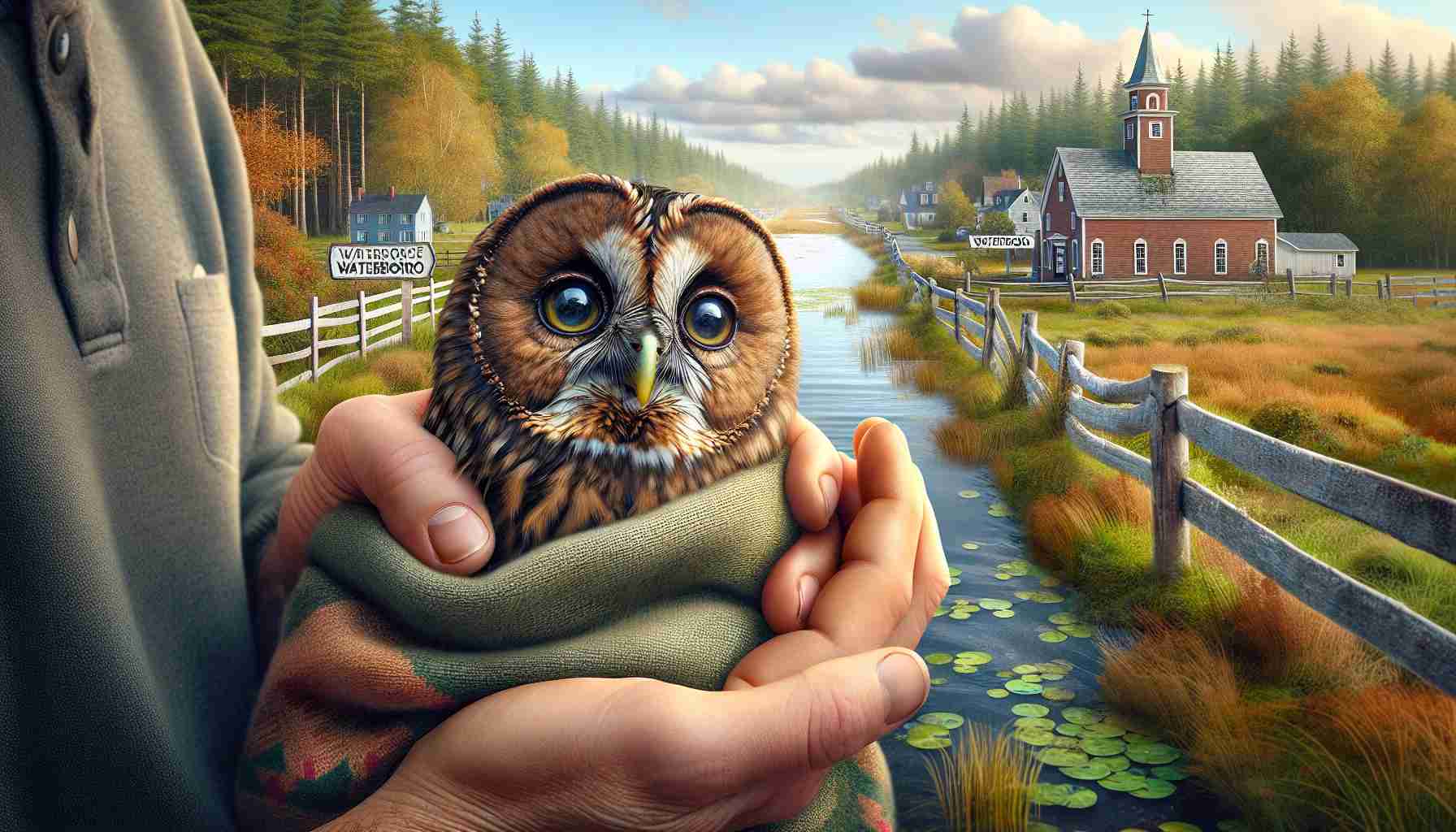York County Sheriff’s Office received alarming news about an injured owl found abandoned on a roadside in Waterboro around 8 p.m. on a Tuesday evening. The situation prompted swift action from local authorities, showing their dedication to wildlife care.
Deputy Levi Johnson, responding to the report, carefully approached the vulnerable bird. He utilized his police jacket to safely secure the owl, showing great commitment to its well-being. Recognizing the need for immediate assistance, he transported the injured creature to the home of Game Warden Steven Thistlewood.
Thistlewood took the owl in for the night, ensuring it received a safe and warm environment during its vulnerable state. The following day, the owl was transported to Avian Haven, a wildlife rehabilitation center in Freedom, where experts are prepared to provide the necessary care and treatment for recovering birds.
This incident highlights the unexpected intersections of community service and wildlife preservation. It serves as a poignant reminder of the importance of compassion and quick action when faced with an animal in distress. Through the dedication of local officers and wildlife specialists, the injured owl now has a chance for recovery and return to its natural habitat. Keep an eye out for such heroes in your community—everyone can make a difference!
Inspiring Rescue: How Community Heroes Saved an Injured Owl
Introduction
The recent rescue of an injured owl in Waterboro, Maine, by local authorities emphasizes the critical role that community service and wildlife preservation play in our society. This article explores the various aspects of wildlife care, the importance of community action, and insights into animal rescue and rehabilitation.
Features of Wildlife Rehabilitation
1. Immediate Action: Quick response is crucial in animal rescue situations. The prompt action taken by Deputy Levi Johnson ensured that the owl received help swiftly.
2. Expert Care: Institutions like Avian Haven provide specialized care tailored to the needs of injured birds. Their trained professionals have the knowledge and resources to aid recovery.
3. Safe Environments: Before being transferred to rehabilitation centers, injured animals need a safe space. Game Warden Steven Thistlewood created a warm and secure environment for the owl, highlighting the importance of immediate sanctuary.
Use Cases of Wildlife Rescue Operations
– Community Engagement: Local law enforcement and wildlife officials often collaborate to respond to wildlife emergencies, fostering stronger community ties.
– Educational Outreach: Successful rescues serve as educational opportunities, teaching the public about wildlife conservation and the importance of reporting injured animals.
Limitations in Wildlife Rescue
– Resource Constraints: Wildlife rehabilitation centers may face challenges such as funding, staffing, and space limitations which can affect the number of animals they can aid.
– Public Awareness: Many individuals may not know how to report injured wildlife, leading to delays in care.
Pros and Cons of Local Wildlife Rescues
Pros:
– Immediate assistance and intervention.
– Supports local wildlife populations.
– Enhances community awareness and involvement.
Cons:
– Potential for limited resources.
– Risk of human interference in wildlife processes.
Insights into Wildlife Preservation Trends
The trend in wildlife preservation is increasingly focused on community involvement. Initiatives encouraging citizens to report injured animals, volunteer at rehabilitation centers, and participate in awareness campaigns are becoming more common. This grassroots approach enhances the effectiveness of wildlife care and promotes conservation efforts.
Innovations in Wildlife Rehabilitation
Recent advancements in wildlife rehabilitation include:
– Telemedicine: Allowing experts to consult remotely on animal care.
– Preventative Care Strategies: Educating the public on habitat preservation to prevent injuries to wildlife.
– Data Monitoring: Using technology to track rehabilitated animals after release, improving rehabilitation techniques.
Conclusion
The story of the injured owl in Waterboro serves as a powerful reminder of the impact individuals and community organizations can have on wildlife conservation. Through awareness, quick action, and expert care, every person has the opportunity to contribute to the well-being of the natural world. To learn more about wildlife conservation efforts and how you can get involved, visit Avian Haven.
By fostering a culture of empathy and responsibility towards wildlife, communities can create safer environments for all living creatures.
